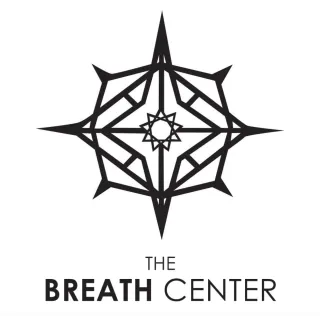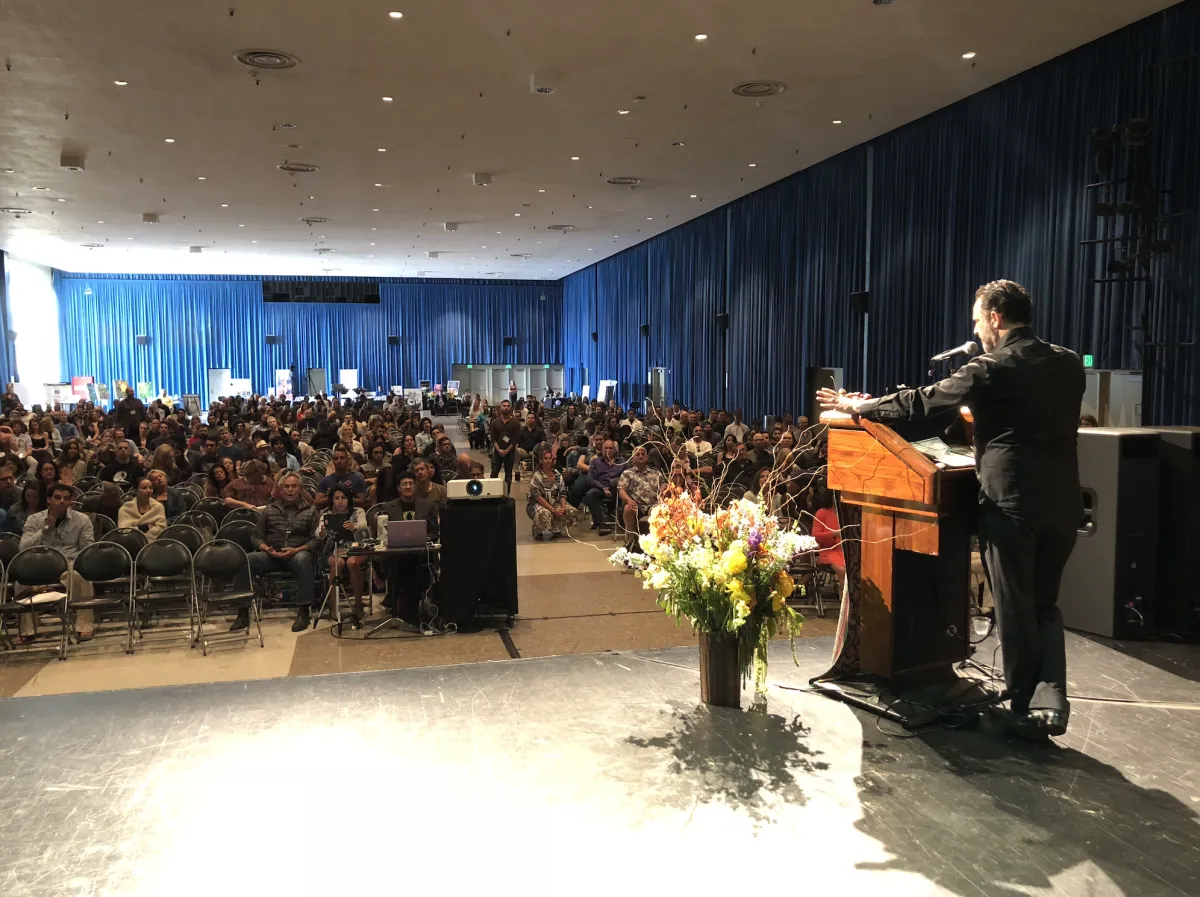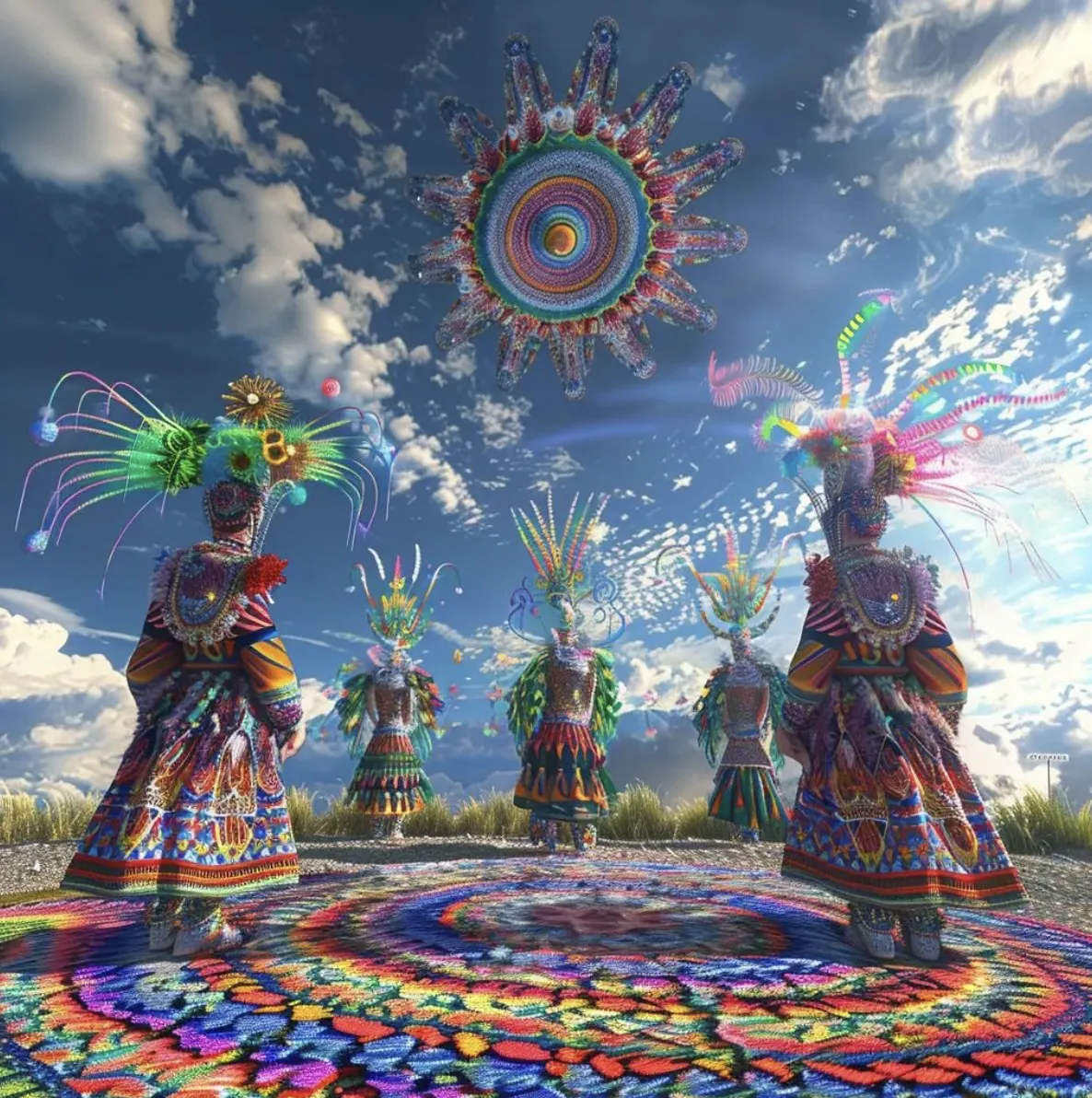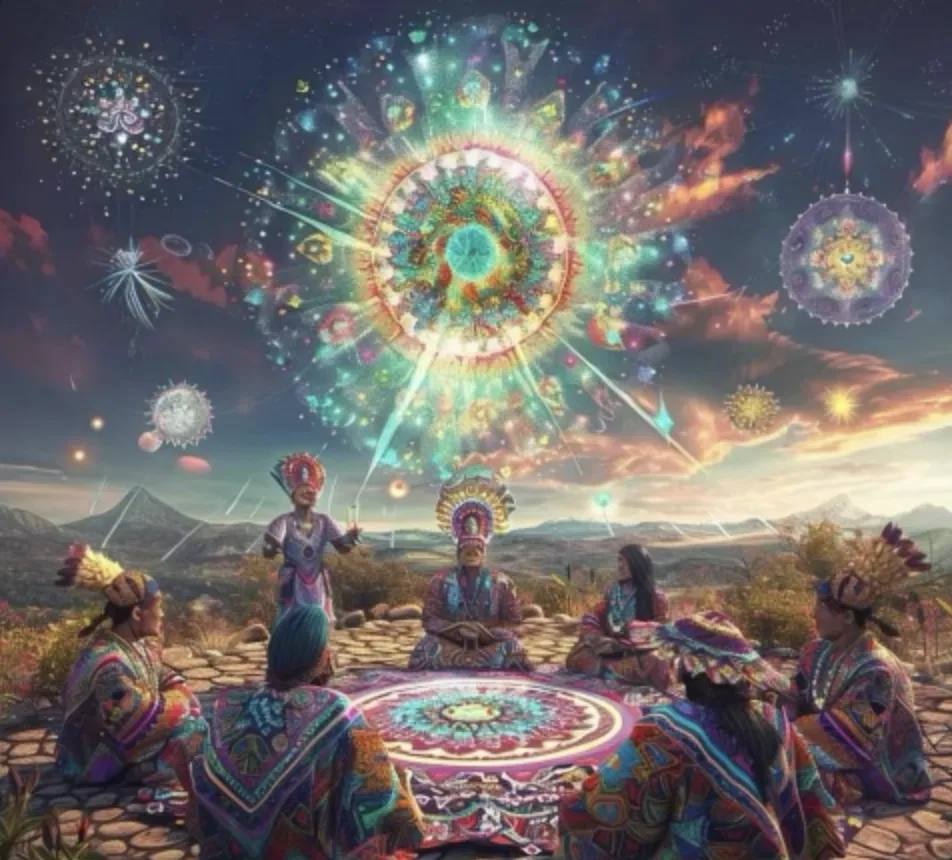Your Online Portal to Infinite Healing Wisdom!
Uncover, Explore, and Transform with a World of Practices at your fingertips with The Academy of Integrated Human Sciences –
Where Healing Meets Innovation, Anytime, Anywhere!
"This is IT. Whether you're seeking personal transformation, answers to big questions, or further education as a practitioner (or all of the above), this is it. I couldn't be more satisfied, thrilled, and honored to be a part of something so
incredible and true. This is for EVERYONE. I implore you to explore here.
This is a safe, fun, and sacred space held by people with the utmost integrity. This is the real work."
-RJ, Graduate, San Diego, CA
Collective Mission:
Our collective mission is to extend our hearts with the same humility and generosity we have been gifted. This world is a magical place! To move past the detached, distracted and mundane monkey mind , we fine tune belief systems, thought patterns and programs to implement a soul nourishing software program. A life long, never ending upgrade, for those who dare to dream big, remain grounded, connected and willing to share the journey that empowers them to create the life of their dreams!
We travel the world, producing and hosting multi-sensory, mass awakening experiences, with a focus on community, compassion, support, and a vision that each individual is seen and acknowledged in their highest genius to fully realize their unique gifts while becoming financially independent through making a difference in the lives of others.
We share a common foundation based in personal wellness, the highest and best practices, ethics, moral code of conduct and education in the healing arts based in ancient wisdom traditions, merged with mysticism and modern science.
When we are together, doing this work, there is no place we would rather be. We know we are in the right place at the right time, all of the time because we are making the most positive impact in people's lives possible, and having fun while doing it!
We offer a very special, real-life experiential, reconnection with something priceless and profound in you, and chances are fairly high, you’re not even aware of it yet.
If you're drawn towards community and the arts, welcome home!
Who are We?
We are a collective of individuals who are warm, welcoming and understanding. We have been fortified by our hardships and have sought out and found the answers to life's most pending inquiries. Together we are connected by a shared mission defined by a commitment to becoming evermore “soul” focused. We are patient, kind and find great value in the development of our own emotional intelligence, so that we may better navigate the way we walk in the world, with an ever deepening willingness to obey our unique and specific internal compasses. Our direction is guided by purpose over profit, yet with that focus, our abundance is ever expanding. We are stimulated by discipline, devotion and the governance of our personal evolution as is determined by nature, our connection, and observance of transitory cosmic influence. Independently, we stand for sovereignty, integrity, honoring our ancestors, and the Earths’ wisdom traditions. Our brand is love, and we walk gently forward with an agreement to address all of our inner work so that we can leave a world worth inheriting by future generations.

The Academy of Integrated Human Sciences®
The Academy of Integrated Human Sciences is a fulcrum of knowledge necessary for the sustainability of humanity, and our planet. As one of the few Nationally Certified Healing Arts Programs and educational arm managing 'The Anatomy of Awakening' Program, it is comprised of graduates who have become a custom tailored evolutionary support channel through which patience, humility, personal experience, and embody the merging of science with mysticism embedded within a foundation. A foundation set in the highest, and best practices, ethics, moral code of conduct, safe set, and setting as is set forward under the guidance of those who have attained specific levels of true mastery.
All things considered
The Academy takes into account, with great respect, the continued advances in technologies, and methods founded and put into practice by Western Medicine. It is imperative to acknowledge there are those who have developed acute diagnosis or are faced with psychological disorders that require pharmaceutical intervention, surgery, and/or main-stream treatment.
Equally important, are preventative disease practices which have been rooted in ancient methodologies, and techniques which run “energetic interference” prior to illness settling into the physiological system. The Academy’s mission is to leave a legacy worth inheriting by future generations through the expansion of humanities awareness concerning all known energetic, self-healing protocols. To support the identification of “early stage” onset of any and all non-genetic disease, and to usher forward the integration of these global concepts into mainstream treatment under current health insurance guidelines. As it is referred to most commonly in academic circles, "The Academy" is the legal educational and licensing entity which offers graduates and program apprentices opportunities to represent and teach copy-written IP as is set forward by 'The Breath Center's Anatomy of Awakening Program'.

The Breath Center™
Within its sacred walls, a symphony of ancient wisdom traditions converge, illuminating the intricate tapestry of mysticism where global spiritual concepts and philosophy harmoniously unite. This unparalleled journey beckons you to plunge deep into the heart of collective healing and elevated awareness. Rooted in the hallowed principles of "The Breath Center," a paragon of integrity, and esoteric wisdom, it offers an extraordinary opportunity to transform the extended populous consciousness. Here, you'll become part of a vibrant community that champions radical self-responsibility, unwavering financial accountability, and the profound pursuit of spiritual enlightenment. Immerse yourself in the sacred arts of holistic healing, safeguarded, and shared with utmost reverence. Together, we harness the boundless power of collective intention, catalyzing not only personal growth but also radiating well-being across the tapestry of existence, embracing family, friends, and the world at large. In this hallowed institution, the enigma of the human spirit unfurls, where the greatest mystery of all is unveiled – the potential to awaken, transcend, and illuminate the path to a brighter, more enlightened future for all humankind.

The Anatomy of Awakening©
'The Anatomy of Awakening' experiential program is one of the world's most comprehensive offerings, combining global spiritual philosophies, which includes wisdom traditions once shared only with clergy, saints, sages, those ordained or those who renounced the “the consumer focused, sensual world ”. The compilation of work focuses on a diverse collection of the most relevant, global, spiritual theories with an emphasis on defining where the threads of these concepts meet. The curriculum merges Western Science with Eastern Philosophy and South American Entheogenics, with the First Nations Indigenous Peoples’ commitment to living life with an intrinsic respect for others, oneself, and Creator. Graduates accelerate their sense abilities in ways unprecedented, and develop radical self-responsibility. The enigma of the human spirit unfurls, where the greatest mystery of all is unveiled – the potential to awaken, transcend, and illuminate the path to a brighter, more enlightened future for all humankind. We are a global spirituality, wellness community, and course platform. Through online, and highly sought-after live experiences, Michael Brian Baker, shares ancient wisdom teachings which seamlessly merge the sacred traditions of Eastern Yogic Pranayama, and Western Physiology and Psychology with South American Enthneogenics, Harmonic Frequencies, and Spiritual Sciences.

PRICELESS ANCESTRAL WISDOM
We are a global spirituality and wellness community and course platform. Through online and highly sought-after live experiences, Michael Brian Baker, shares ancient wisdom teachings which seamlessly merge the sacred traditions of Eastern Yogic Pranayama and Western Physiology with South American Enthneogenics, Harmonic Frequencies, and Spiritual Sciences.

Over Two Decades
EXPERIENCE
Tens of Thousands of
HAPPY STUDENTS
The trainings have provided thousands of participants with profound healing, boosted immunity, increased awareness, vitality, and deeply positive life-changing experiences. All the teachings support the elimination of fear of death, anxiety, restlessness, depression and highly accelerate personal growth and deep appreciation for the experience of life!
How are we doing that?
One of the biggest Corruptions that we face today is not directly related to politics, the monetary system, government, or foreign bodies; it's all related to our disconnect with what's going on inside us. Whether you're looking for a better job, better relationships, changing where you live, your personality, getting in shape, becoming a world-famous musician, or a best-selling author, one tiny little piece we're missing is that it's all an inside job. Change it internally, and externally it becomes your experience. But how do we do that in the ancient texts of long ago Sears and Sages have set forth and prophesied an age where Humanity would come to an understanding that in our very base cellular structure we are energy and therefore learn how to change the inside and the external will follow. Congratulations, you found the buried treasure! Now, whether you'll take advantage of it isn't only up to you but also the organic unfolding of the trajectory of your soul. Yes, we said it. We spend so much time wondering what's wrong with us. Well here at The Academy, we're not looking for the holes, we're focusing on the whole. Meaning the macro and the micro. To simplify it, we begin with 'Right Respiration' and we guarantee you are going to be blown away by the results or your money back!

We are committed to sharing these teachings, and using our energies, the power of our community and this platform to awaken society and to drive positive social change and environmental stewardship for ourselves, our children, our community, and our planet.
Leading by Example
It’s not what you do or how you act in front of others, it’s all about how you are while alone with no one watching or keeping score.
True confidence comes from developing the ability to confide with the self.
Lack of trust comes from not being able to trust yourself.
Bad relations? you allowed it. Not living in your highest? You accept it.
Allowing your situation to dictate your life rather than designing the life of your dreams? You must be complicit because you are navigating right into all of the situations experienced. Know that it’s just a fine not some big thing to begin to create small shifts to align and allow the receptive measure required to get you where you desire to be!
Step up and take the risk. You’re worth it and if you give it your all, you just might surprise yourself.
Even if and especially when you think you have it all handled and figured out.
How much better could it get?
"Ground breaking! Effortlessly takes us into the very ground of our own being. Hands down, the finest Pranayama Arts Educational System that I know of. In my forty years as a licensed therapist, I have been privileged to work with and know many great teachers. I spent over 15 years working closely with John Bradshaw and have always been drawn to how essential merging modalities is in releasing retained violation and emotional trauma. Michael has touched thousands in his workshops and trainings. He is one of the few that I can say I trust implicitly."
Thomas Hedlund
MFT
NICE TO MEET YOU
OUR TEAM
Michael Brian Baker
Founder/ Principal Austin, Texas
Jayna Nordmark
Project Coordinator
Las Vegas, NV
Suzan Fauzi
Accounting
Anthony E Patterson
CPA
ALUMNI RESIDENCY
Rhiannon Jane Love
Los Angeles, CA
Marcela Guaman
San Diego, CA
Steve Bell
San Diego, CA
Mirilena Lee
Tennessee
As Seen On:





Keynote Los Angeles Psychedelic Science Symposium
Michael Brian Baker, Founder/ Principal, Texas
“We seek to reach as much of humanity as is possible, to share the true nature of our being, the purpose of life on this planet, and to foster the expansion of collective consciousness in a stimulating, inspiring, inclusive, non-secular, and deeply supportive way.”
-Michael Brian Baker, Founder/ Principal, Texas
Unite Humanity's Soul Symphony – explore our spiritual music collections

Love is the Strongest Medicine
Experience the transformative power of music with 'Love is the Strongest Medicine' series. Dive into a soul-stirring journey where melodies heal, uplift, and connect. 11 min, 22 min, 33 min collection is a celebration of love's healing energy, curated to soothe the spirit and awaken the heart.
What is Happening Now
Bridging Infinite Source
We acknowledge the full brilliant array of healing arts techniques and traditions! From Rolfing to Cranial Sacral to Tai Chi and Qigong.
From Acupuncture to Reiki and Pranic Sweeping to Plant Medicines.
All in unison with a baseline understanding that most ailments are energetic in their root.
There are blueprints to wellness from engaging with all of these preventive disease, energy medicines rooted in ancient philosophies.
We don’t focus on one lineage or practice. We include them all!
The center of our offerings is The 10 Methods of Awakening. There are unique techniques for different people with unique dispositions, that determine an increase or gentle implementation of universal current, infinite source is prana!
Here, we consider and explore them all, with a focus on the most simple and accessible methods for our bustling modern day world.
With a deep focus on the science of light, (cosmology) and the physiology
of yolking, integrating or yoga of life, we share the road less traveled, directed home to the heart!
It’s an inside job between you and you, and we are here for all of it!
The place where science and mysticism meet for a much needed heart-to-heart connection.
Focus on Similarities
For those less traveled, the world is a safe and mystical playground, with an endless flowing stream of
grace and experience to be had and cherished by all!
We are far more similar than we are different, and while all of that which seems foreign is only the unknown calling us forward to explore, this vast miracle that we have been blessed to co-create within has many a buried treasure for each one of us to enrich our life experience by…
Sure we all have our shit, but everything changes and so to know what breeds contempt in another may be another ones medicine. See everyone through the creators eyes and the compassion of many lives will bring you home to harmony
JOIN OUR NEWSLETTER
Stay informed.
Subscribe to our Newsletter for updates, without the overload!
Discover the truth of who you are - using your own innate power - freeing you to live a joy-filled and extraordinary life."
- Michael Brian Baker, Founder/Principal, Texas
Refining Sense Abilities
Awareness is subject to our senses. The more we can sense the more aware we become.
Equally, the more our consciousness expands, an increase in the ability to perceive follows.
This means we are becoming more sense able.
Here we have an agreement that if we want to feel good, we have to first get good at feeling again.
By a process of determining how the universe speaks to and through you individually, gradually your focus will guide away from external stimuli and distraction, allowing a more calm, collected and clear picture
of who you are to become and higher potentials in your field.
Just you wait, there is so much more to come!
How can we help you?
Email: info@thebreathcenter.com
Assistance Hours
Monday– 7:00am – 3:00pm PST
Wednesday-Friday 7:00am-3:00pm PST
Phone Number:
1-903-321-2129
Social Media
FB @thebreathcenter
IG @anatomyofawakening
Email: info@thebreathecenter.com
Site: www.thebreathcenter.com







